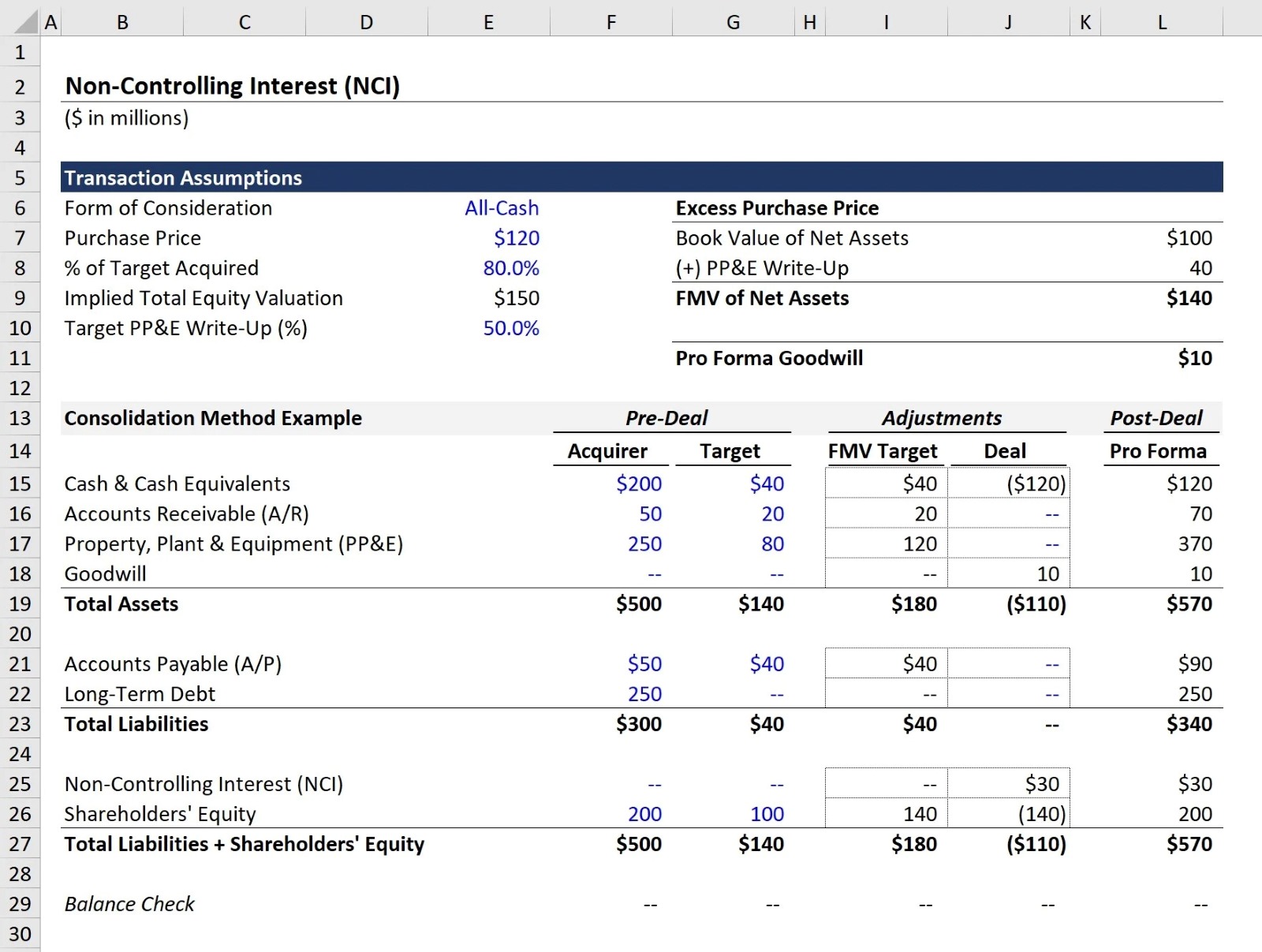Home>Finance>How To Calculate Capm With Changing Capital Structure


Finance
How To Calculate Capm With Changing Capital Structure
Published: December 25, 2023
Learn how to calculate the Capital Asset Pricing Model (CAPM) with changing capital structure in the field of Finance. Unlock the secrets to accurate valuations and investment decisions.
(Many of the links in this article redirect to a specific reviewed product. Your purchase of these products through affiliate links helps to generate commission for LiveWell, at no extra cost. Learn more)
Table of Contents
- Introduction
- Understanding CAPM
- Importance of Changing Capital Structure
- Variables to Consider
- Step-by-Step Process of Calculating CAPM with Changing Capital Structure
- Determine the Risk-Free Rate
- Calculate the Market Risk Premium
- Calculate the Beta of the Stock
- Adjust the Beta for Changing Capital Structure
- Calculate the Expected Return
- Interpretation and Analysis
- Limitations of CAPM with Changing Capital Structure
- Conclusion
Introduction
Welcome to the fascinating world of finance! In today’s rapidly changing business landscape, it is crucial for investors and financial professionals to have a deep understanding of financial models and tools that help make informed decisions. One such model is the Capital Asset Pricing Model (CAPM), which is widely used to calculate the expected return on an investment given its risk.
CAPM assumes a constant capital structure, where the proportion of debt and equity in a company’s capital remains unchanged. However, in reality, companies often change their capital structure to optimize their financial position or adapt to market conditions. This variation in the capital structure can have a significant impact on the riskiness of an investment and, consequently, its expected return.
In this article, we will delve into the concept of CAPM and explore the importance of incorporating changing capital structure in the calculation. We will also discuss the variables to consider and provide a step-by-step process to calculate CAPM with changing capital structure. By the end of this article, you will have a comprehensive understanding of how to adjust CAPM for changing capital structure and make more accurate investment decisions.
Before we dive into the details, it is important to note that this article assumes a basic understanding of finance and CAPM. If you are unfamiliar with these concepts, we recommend familiarizing yourself with the fundamentals first to make the most of the information presented here.
Understanding CAPM
The Capital Asset Pricing Model (CAPM) is a financial model that helps investors estimate the expected return of an investment based on its systematic risk. It is widely used in finance as a tool for pricing risky securities and calculating the appropriate rate of return for investments.
The core concept of CAPM is that investors require compensation for bearing risk, and that compensation is based on the systematic risk of the investment. Systematic risk refers to the risk that cannot be eliminated through diversification and is related to the overall market conditions. Examples of systematic risk include changes in interest rates, inflation, and economic factors.
According to CAPM, the expected return of an investment is calculated by adding the risk-free rate of return to a risk premium. The risk-free rate represents the return an investor can earn by investing in a risk-free asset such as government bonds. The risk premium, also known as the market risk premium, is the additional return that investors require for taking on the systematic risk of the investment.
The formula for calculating the expected return using CAPM is as follows:
Expected Return = Risk-Free Rate + Beta × (Market Risk Premium)
The key component in this equation is the Beta, which measures the systematic risk of a particular stock or investment. A beta of 1 indicates that the stock moves in tandem with the market, while a beta greater than 1 implies that the stock is more volatile than the market. A beta less than 1 suggests that the stock is less volatile than the market.
By using CAPM, investors can assess whether an investment is expected to generate a return that justifies the risk associated with it. It provides a standardized framework for evaluating investments and comparing them to the market as a whole.
However, it is important to note that CAPM has its limitations and is based on a set of assumptions. The model assumes that investors are risk-averse, markets are efficient, and there is a linear relationship between risk and return. These assumptions may not always hold true in the real world.
Importance of Changing Capital Structure
The capital structure of a company refers to the mix of debt and equity financing used to fund its operations. It plays a crucial role in determining a company’s financial health and the risk associated with its investments.
As market conditions and business circumstances change, companies often adjust their capital structure to achieve various goals, such as reducing costs, improving liquidity, or maximizing shareholder value. These changes can have a significant impact on the risk profile of the company and its investments.
For instance, increasing the proportion of debt in the capital structure can result in higher financial leverage. This can amplify the returns for shareholders when things are going well, as the cost of borrowing is typically lower than the returns from the investment. However, it can also increase the risk of financial distress if the company faces difficulties in meeting its debt obligations.
On the other hand, increasing the proportion of equity in the capital structure can provide more stability but may dilute the returns for shareholders. It reduces the financial risk of the company as it is not obligated to make fixed debt payments. However, equity financing may come at a higher cost in terms of dilution of ownership and potential dividend payments.
Understanding the importance of changing capital structure is crucial in accurately assessing the risk and expected return of an investment. Ignoring the changes in capital structure can lead to misjudgment of the riskiness of an investment and result in inaccurate calculations of expected return using models like CAPM.
By accounting for changing capital structure, investors and financial professionals can make more informed decisions and adjust their expected return calculations accordingly. This ensures a more realistic evaluation of the risk and potential rewards of an investment, and ultimately leads to better investment outcomes.
Moreover, considering the changing capital structure of a company allows investors to identify trends and patterns. It provides insights into the financial strategies and decision-making processes of the company, which can be valuable when analyzing potential investments or assessing the financial stability of a firm.
In the next section, we will explore the variables that need to be considered when incorporating changing capital structure into the calculation of CAPM.
Variables to Consider
When incorporating changing capital structure into the calculation of CAPM, there are several variables that need to be considered. These variables help adjust the risk profile of the investment and ensure a more accurate estimation of the expected return.
- Debt-to-Equity Ratio: The debt-to-equity ratio represents the proportion of debt and equity financing in a company’s capital structure. It is a key factor in determining the riskiness of an investment. As the debt-to-equity ratio increases, the financial risk of the investment also increases, leading to a higher expected return. When calculating CAPM with changing capital structure, it is necessary to consider the changes in the debt-to-equity ratio over time.
- Interest Rate on Debt: The interest rate on debt is an important variable to consider when adjusting CAPM for changing capital structure. Changes in interest rates can impact the cost of debt and, consequently, the risk profile of the investment. Higher interest rates increase the cost of borrowing and can lead to higher financial risk. Therefore, it is crucial to incorporate changes in interest rates when calculating the expected return.
- Cost of Equity: The cost of equity represents the return required by investors for holding the company’s shares. It is influenced by factors such as the company’s profitability, growth prospects, and market conditions. Changes in the capital structure can impact the cost of equity, as it affects the risk and potential returns for shareholders. When calculating CAPM with changing capital structure, it is necessary to adjust the cost of equity based on the changes in the capital structure.
- Market Risk Premium: The market risk premium is the additional return that investors require for taking on the systematic risk of the investment. It represents the difference between the expected return of the market and the risk-free rate of return. Changes in the capital structure can impact the risk profile of the investment, which in turn affects the market risk premium. It is important to consider the changes in the market risk premium to accurately estimate the expected return using CAPM.
- Beta: Beta measures the systematic risk of a stock or investment, indicating its volatility relative to the market. The beta is a key component in the CAPM formula and needs to be adjusted for changing capital structure. As the capital structure changes, the riskiness of the investment may alter, influencing the beta value. It is important to recalculate the beta based on the changes in the capital structure to obtain a more precise estimation of the expected return.
By considering these variables, investors can ensure that their calculations of CAPM with changing capital structure are thorough and accurate. This enables them to make informed decisions, assess the risk-reward trade-off of investments more effectively, and align their expectations with the changing dynamics of the market.
Now that we understand the variables to consider when incorporating changing capital structure into the calculation of CAPM, let’s proceed to the step-by-step process of calculating CAPM with changing capital structure in the next section.
Step-by-Step Process of Calculating CAPM with Changing Capital Structure
Calculating CAPM with changing capital structure requires a systematic approach to ensure accurate estimations of the expected return. Let’s walk through the step-by-step process:
- Determine the Risk-Free Rate: Begin by identifying the risk-free rate, which represents the return an investor can earn by investing in a risk-free asset such as government bonds. This rate serves as the baseline for calculating the expected return.
- Calculate the Market Risk Premium: Determine the market risk premium by taking the difference between the expected return of the market and the risk-free rate. This premium represents the compensation investors require for taking on the systematic risk of the investment.
- Calculate the Beta of the Stock: Calculate the beta of the stock, which measures the systematic risk of the investment. Beta represents the volatility of the stock relative to the market. A stock with a beta of 1 moves in line with the market, while a beta greater than 1 indicates higher volatility. Use historical data or regression analysis to estimate the beta.
- Adjust the Beta for Changing Capital Structure: Adjust the beta to account for the changing capital structure. As the debt-to-equity ratio changes, the riskiness of the investment may fluctuate, impacting the beta. Carefully analyze the changes in the capital structure and adjust the beta accordingly.
- Calculate the Expected Return: Finally, calculate the expected return using the adjusted beta and the market risk premium. Multiply the adjusted beta by the market risk premium and add the risk-free rate to get the expected return.
By following this step-by-step process, you can accurately calculate the expected return of an investment using CAPM with changing capital structure. It allows you to incorporate the relevant variables and adjustments, providing a more realistic estimation of the potential returns and risks associated with the investment.
Keep in mind that these calculations are based on the assumptions of CAPM and may have limitations. Additional factors and considerations may need to be taken into account depending on the specific circumstances of the investment and the market environment.
In the next section, we will explore the interpretation and analysis of the calculated expected return using CAPM with changing capital structure.
Determine the Risk-Free Rate
In the context of calculating CAPM with changing capital structure, the first step is to determine the risk-free rate. The risk-free rate represents the return an investor can earn by investing in a risk-free asset, typically considered to be government bonds.
The risk-free rate serves as a baseline for calculating the expected return of an investment. It represents the minimum return that investors expect to receive without taking on any additional risk. Since it reflects the return on a risk-free asset, it is not subject to market fluctuations or other investment-specific risks.
To determine the risk-free rate, one option is to look at the yield on government bonds of a suitable maturity. Government bonds, particularly those issued by stable and creditworthy countries, are considered to have negligible default risk and are widely regarded as risk-free assets.
It is important to select government bonds with a maturity that matches the time horizon of the investment being evaluated. For instance, if you are analyzing a long-term investment, you would typically look at long-term government bond yields.
Another approach to determining the risk-free rate is to use a proxy, such as the yield on a widely recognized risk-free asset such as the U.S. Treasury bond. This proxy method provides a close approximation of the risk-free rate, especially in cases where directly observed government bond yields are scarce or unreliable.
Keep in mind that the risk-free rate can change over time due to macroeconomic factors such as changes in central bank monetary policies or inflation expectations. Therefore, it is important to use real-time or up-to-date data when determining the risk-free rate for CAPM calculations.
Once the risk-free rate has been determined, it serves as a critical component in the CAPM formula for calculating the expected return of an investment. The risk-free rate provides a benchmark return against which the risk premium is added, reflecting the additional return required to compensate investors for taking on systematic risk.
In the next step, we will calculate the market risk premium, which is the difference between the expected return of the market and the risk-free rate.
Calculate the Market Risk Premium
Calculating the market risk premium is the second step in determining the expected return of an investment using CAPM with changing capital structure. The market risk premium represents the additional return that investors require for taking on the systematic risk associated with investing in the market.
The market risk premium is essentially the difference between the expected return of the market and the risk-free rate. It serves as a measure of the compensation investors demand for bearing the inherent risks of investing in the overall market, above and beyond the risk-free rate.
To calculate the market risk premium, subtract the risk-free rate from the expected return of the market. The expected return of the market can be estimated based on various benchmark indices, such as the S&P 500 or a suitable market index that represents the specific market you are analyzing.
It is important to note that the market risk premium is not a fixed value but is subject to change depending on market conditions and investor sentiment. Market risk premiums can vary over time and across different market environments.
There are several factors that can influence the level of the market risk premium. These factors include economic conditions, market volatility, inflation expectations, geopolitical events, and overall investor sentiment. Higher levels of uncertainty and perceived risk typically result in an increase in the market risk premium, as investors demand higher returns to compensate for the added risk.
It is crucial to use up-to-date and reliable data when calculating the market risk premium. Financial information sources, market research reports, and historical data on market returns can be valuable resources in determining the expected return of the market and, subsequently, the market risk premium.
Once you have calculated the market risk premium, it becomes a critical component in the CAPM formula for estimating the expected return of an investment. The resulting expected return provides a benchmark for evaluating the potential returns and riskiness of an investment, considering the specific market conditions and the risk-free rate.
Next, we will explore the third step in calculating CAPM with changing capital structure: determining the beta of the stock or investment.
Calculate the Beta of the Stock
The third step in calculating CAPM with changing capital structure is to determine the beta of the stock or investment. Beta is a measure of the systematic risk of a particular asset or security, indicating its volatility relative to the overall market.
A beta value greater than 1 indicates that the stock is more volatile than the market, meaning it tends to fluctuate more in response to market movements. Conversely, a beta value less than 1 suggests that the stock is less volatile than the market, exhibiting less pronounced price swings. A beta of 1 signifies that the stock moves in line with the overall market.
To calculate the beta of a stock, one common approach is to use regression analysis. This involves analyzing the historical relationship between the returns of the stock and the returns of a suitable market index, such as the S&P 500. By running a regression analysis, the slope of the line represents the beta of the stock.
Regression analysis takes into account the historical performance of the stock relative to the market, identifying the stock’s sensitivity to market movements. The resulting beta value provides an estimation of the systematic risk associated with the stock and serves as a key input in the CAPM formula.
It is important to note that beta values can fluctuate over time, especially in the case of changing capital structure. As the risk profile of the company changes due to shifts in the debt-to-equity ratio, the systematic risk of the stock may also be affected. Therefore, it is crucial to recalculate the beta whenever there are significant changes in the capital structure.
Financial data providers, such as Bloomberg or Yahoo Finance, often provide beta values for publicly traded stocks. However, it is recommended to verify and validate these values by conducting an in-depth analysis using historical data and regression techniques.
By accurately calculating the beta of the stock, investors can gain insights into its risk characteristics and incorporate it into the CAPM formula. The beta value, coupled with other inputs like the risk-free rate and the market risk premium, helps determine the expected return of the stock in relation to its systematic risk.
Next, we will discuss the fourth step in calculating CAPM with changing capital structure: adjusting the beta for the changes in the capital structure.
Adjust the Beta for Changing Capital Structure
In the fourth step of calculating CAPM with changing capital structure, it is essential to adjust the beta for the changes in the capital structure of the company. As the capital structure changes over time, the risk profile of the company and its investments can also be influenced. Therefore, it is necessary to account for these changes when estimating the expected return using CAPM.
The primary purpose of adjusting the beta is to accurately reflect the riskiness of the investment in relation to the market. Changes in the capital structure, such as alterations in the debt-to-equity ratio, can impact the financial risk and leverage of the company. Consequently, the systematic risk of the investment may vary, influencing the beta value.
To adjust the beta for changing capital structure, start by analyzing the changes in the debt-to-equity ratio over the relevant time period. Determine the direction and magnitude of the changes and assess their impact on the riskiness of the investment. As debt levels increase, the risk and volatility of the investment typically rise, resulting in a higher beta. Conversely, a decrease in debt levels may lower the beta.
Once the changes in the capital structure have been identified, adjust the beta accordingly. If the debt-to-equity ratio increases, multiply the existing beta by a factor greater than 1 to reflect the higher risk associated with the increased leverage. Conversely, if the debt-to-equity ratio decreases, multiply the existing beta by a factor less than 1 to account for the reduced risk.
It is important to note that the adjustment factor should be determined based on an analysis of historical data and an understanding of the relationship between the capital structure and the risk of the investment. The methodology for adjusting the beta may vary depending on the specific circumstances and industry dynamics. Consulting financial experts or conducting additional research can provide valuable insights for making accurate adjustments.
By adjusting the beta for changing capital structure, investors can achieve a more precise estimation of the expected return. The adjusted beta, along with other components such as the risk-free rate and the market risk premium, enables a more accurate assessment of the potential returns and risk profile of the investment within the specific capital structure context.
In the next step, we will calculate the expected return using the adjusted beta and the market risk premium.
Calculate the Expected Return
The fifth step in calculating CAPM with changing capital structure is to determine the expected return of the investment. This can be achieved by incorporating the adjusted beta and the market risk premium into the CAPM formula.
Recall that the CAPM formula is:
Expected Return = Risk-Free Rate + Beta × (Market Risk Premium)
Start by using the adjusted beta value obtained in the previous step. Multiply the adjusted beta by the market risk premium, which represents the compensation required for taking on the systematic risk associated with the investment.
Next, add the product of the adjusted beta and the market risk premium to the risk-free rate. The risk-free rate serves as the baseline return without accounting for the additional risk posed by the investment.
By calculating the expected return using the CAPM formula, you obtain an estimation of the potential return that compensates investors for the systematic risk inherent in the investment, considering its changing capital structure.
Keep in mind that the expected return calculated using CAPM with changing capital structure represents a theoretical estimation based on the assumptions and inputs used in the model. It is not a guaranteed outcome, but rather a measure of the expected performance of the investment relative to its systematic risk.
The accuracy of the calculated expected return depends on the reliability and accuracy of the inputs used, including the risk-free rate, market risk premium, and the adjusted beta. It is crucial to use up-to-date and relevant data to ensure the most precise estimation.
Interpreting the calculated expected return in the context of the specific investment and its changing capital structure is essential. Comparing it to the risk-reward expectations and considering other relevant factors, such as industry trends and specific company circumstances, can provide a more comprehensive understanding of the potential outcomes.
In the next section, we will discuss the interpretation and analysis of the calculated expected return using CAPM with changing capital structure.
Interpretation and Analysis
Once the expected return has been calculated using CAPM with changing capital structure, it is important to interpret and analyze the results in the context of the specific investment and its risk profile.
The calculated expected return represents the estimated return that investors can expect to earn for taking on the systematic risk associated with the investment. It serves as a benchmark against which the investment’s potential returns can be assessed.
Interpretation of the expected return involves comparing it to the investor’s required rate of return and evaluating whether the potential returns are sufficient to compensate for the perceived risk. If the expected return is higher than the investor’s required rate of return, the investment may be considered attractive. Conversely, if the expected return falls short of the required rate of return, the investment may be deemed less desirable.
Analysis of the expected return should also take into account other investment evaluation criteria, such as the investment’s risk tolerance, time horizon, liquidity needs, and specific goals and objectives. These factors can influence the investor’s decision-making process and determine the suitability of the investment.
Furthermore, considering the changing capital structure and its impact on the expected return can provide insights into the financial health and stability of the company. Changes in the debt-to-equity ratio can indicate shifts in the company’s leverage and its potential exposure to financial risk. Assessing the company’s ability to effectively manage its capital structure can be valuable in understanding the investment’s overall risk profile.
It is important to note that CAPM with changing capital structure has its limitations. The model assumes several underlying assumptions and simplifications, such as efficient markets and linear relationships between risk and return. Deviations from these assumptions may affect the accuracy of the expected return estimation.
Therefore, it is crucial to consider the limitations of the model and supplement the analysis with additional research, due diligence, and professional judgment. Incorporating qualitative factors, market trends, and other valuation techniques can help form a comprehensive view of the investment opportunity.
By interpreting and analyzing the calculated expected return within the context of the investment’s risk profile, investor preferences, and market conditions, individuals can make more informed decisions regarding their investment strategies and portfolio allocations.
Now that we have explored the interpretation and analysis of the expected return, it is important to be aware of the limitations of CAPM with changing capital structure, which we will discuss in the next section.
Limitations of CAPM with Changing Capital Structure
While the Capital Asset Pricing Model (CAPM) is a widely used framework for estimating expected returns, it has certain limitations, especially when it comes to incorporating changing capital structure. Understanding these limitations is crucial for making informed investment decisions and avoiding potential inaccuracies in expected return calculations.
1. Assumptions: CAPM is based on several key assumptions, such as efficient markets, risk aversion, and a linear relationship between risk and return. In reality, these assumptions may not always hold true, leading to potential deviations in the model’s accuracy.
2. Static Structure: CAPM assumes a constant capital structure, disregarding the dynamic nature of real-world businesses. Companies often adjust their capital structure to optimize their financial position or adapt to changing market conditions. Neglecting these changes can result in inaccurate estimations of risk and expected return.
3. Beta Estimation: Calculating the beta, a crucial component of CAPM, relies on historical data that may not fully capture future market dynamics. The accuracy of beta estimates is influenced by the time period and the choice of benchmark index, potentially leading to forecast errors.
4. Market Efficiency: CAPM assumes that markets are efficient, meaning that all relevant information is reflected in asset prices. However, in reality, markets may not always be efficient, leading to potential mispricing and deviations from expected returns predicted by CAPM.
5. Company-Specific Factors: CAPM does not explicitly consider company-specific factors, such as management quality, competitive advantage, or industry dynamics. These factors can significantly impact an investment’s risk and expected return, but they are not incorporated into the model.
6. Limited Applicability: CAPM is primarily suitable for publicly traded securities with market-based betas. It may not be as effective in assessing expected returns for private companies or illiquid assets where market pricing information is limited or unavailable.
7. Constant Risk-Free Rate: CAPM assumes a constant risk-free rate, ignoring potential fluctuations in interest rates. Changes in the risk-free rate can influence the adequacy and precision of the calculated expected return.
Understanding these limitations helps investors and financial professionals use CAPM with changing capital structure as a tool in conjunction with other valuation techniques and considerations. Supplementing CAPM with qualitative analysis, sensitivity testing, and an assessment of specific company and market factors can lead to a more comprehensive evaluation of investment opportunities.
In summary, while CAPM is a valuable and widely used tool, its limitations highlight the importance of applying it judiciously and considering the changing dynamics of capital structure alongside other relevant factors in the investment decision-making process.
Now, let’s wrap up the article in the concluding section.
Conclusion
Calculating the expected return using the Capital Asset Pricing Model (CAPM) with changing capital structure is a valuable tool for investors and financial professionals. By incorporating the variables specific to changing capital structure, such as the debt-to-equity ratio and interest rates, a more accurate estimation of the expected return can be achieved.
Throughout this article, we have explored the step-by-step process of calculating CAPM with changing capital structure. We discussed the importance of understanding CAPM, the variables to consider, and the adjustments required for changing capital structure. By following this process, investors can make more informed decisions and better evaluate the risk and potential rewards of their investments.
It is essential to interpret the calculated expected return within the context of the specific investment, risk preferences, and market conditions. While CAPM provides a valuable estimation, it is important to consider the limitations of the model and complement the analysis with additional research and qualitative factors.
By incorporating changing capital structure in the calculation, investors gain insights into the dynamic nature of a company’s risk profile. This allows for a more comprehensive evaluation of investment opportunities and helps align expectations with the changing dynamics of the market.
In conclusion, CAPM with changing capital structure provides a framework for estimating expected returns that account for the evolving risk profiles of investments. While it is not without its limitations, proper application and careful consideration of relevant factors can enhance decision-making and support the pursuit of successful investment outcomes.
Remember to continuously monitor and reassess the changing capital structure and market conditions that may impact the risk and expected return of the investment. Adapting to these changes enables investors to make well-informed decisions and maximize their chances of achieving their financial goals.
So, armed with your understanding of CAPM and the ability to calculate expected returns with changing capital structure, you are well-equipped to navigate the complex world of finance and make more informed investment decisions.














